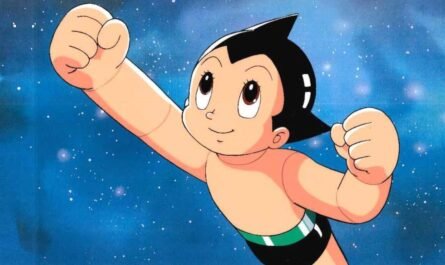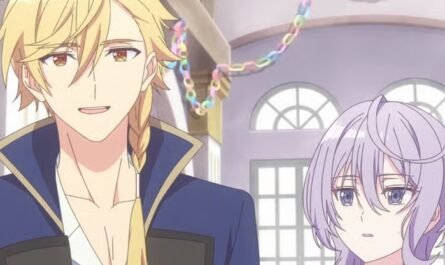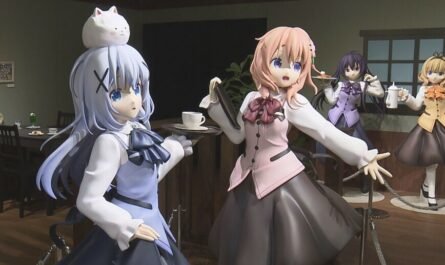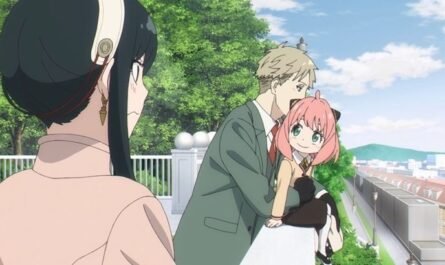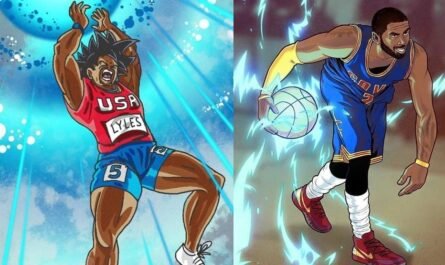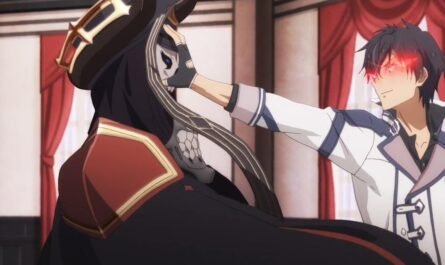“Totoro” was initially reluctant.
Based on the results of “Castle in the Sky,” preparations for a new work by Hayao Miyazaki began in the fall of 1986. Toshio Suzuki noticed one image board drawn by Miyazaki and proposed to make it into a movie.
What was drawn there was a girl with an umbrella waiting for her father at a bus stop in the rain and Totoro standing with a large leaf on her head. For Miyazaki, it was a picture drawn as one of the ideas for a TV special program, but it was also a project that had been in the works since the late 1970s.
The story is set in the suburbs of Tokyo before the spread of TV and depicts the interaction between a girl who moved there and the mysterious ghost “Totoro,” who lives in the forest. By the way, the image board of “Totoro” was published in March 1983 as “Hayao Miyazaki Image Board Collection” and “Animage” September 1983 issue “Nausicaa of the Valley of the Wind / Hayao Miyazaki Image Board Collection.” It was already out in the world, and its existence was known to some fans.
However, the project “My Neighbor Totoro” was disapproved by Tokuma Shoten, the parent company of Studio Ghibli. One of the main reasons was that the project itself was sober, and it was a project that was very different from the line “Hayao Miyazaki = science fiction action” such as “Nausicaä of the Valley of the Wind” and “Castle in the Sky.” Tokuma’s side suggested they approve the project as long as it was a video project instead of a movie, but Suzuki insisted on making it into a film.
Suzuki, essentially planning Ghibli’s works, elaborated further after the upper management rejected the “Totoro” project. The idea emerged was that if it was a double feature with another work, it might be possible to persuade Tokuma Shoten executives. At this time, Suzuki proposed an animation adaptation of Akiyuki Nosaka’s novel Grave of the Fireflies.
The beginning of the Grave of the Fireflies plan dates back to January 1986, before this two-pronged plan. It all started when Isao Takahata, Laputa: Castle in the Sky producer, visited the Animage editorial department.
At this time, editor-in-chief Hideo Ogata approached Takahata, saying, “When Japan lost the war, and the adults lost their confidence, only the children were fine. Would you like to make a movie like that?” is. Takahata showed interest in this proposal and began searching for an original work that would match Ogata’s bid with deputy editor-in-chief Suzuki and others.
At first, Takahata suggested that the novel be based on Hayato Murakami’s essay “Boys Who Ran in Japan,” but it was eventually abandoned. His attractive works were hard to find.
One day, when Suzuki suggested Akiyuki Nosaka’s novel “Grave of the Fireflies,” which he read in the autumn of his 19th year, Takahata, who had read the book, agreed, saying, “I want to make it into an anime.” Takahata’s “Grave of the Fireflies” movie project has started. It was unusual for Takahata to decide to make a movie after reading a book.
“I don’t care if Ghibli is the last one with these two.”
“My Neighbor Totoro” and “Grave of the Fireflies” were reorganized through this process as a double feature project of about 60 minutes. Osamu Kameyama of the Animage editorial department, who was in charge of Miyazaki, compiled the plans for Totoro and Suzuki for Grave of the Fireflies.
However, this project also could have gotten a better response. At this time, Mr. Tatsumi Yamashita, managing director of Tokuma Shoten, rebuked Suzuki, saying, “If it’s just a ghost, then what is a ‘grave’?”
The project was again in a stalemate, but Shinchosha, the publisher of Grave of the Fireflies, showed great interest in this project, leading to a breakthrough.
The trigger was that Kameyama and Kunioki Hatsumi of Shinchosha were acquaintances. Suzuki noted this and, in October 1986, through Kameyama, asked if Shinchosha could produce Grave of the Fireflies. At that time, the company, which was in the mood to take on challenges in new fields, positively accepted this proposal from Tokuma’s side.
President Ryoichi Sato called President Yasuyoshi Tokuma to appeal for joint distribution based on this behind-the-scenes negotiation. Through this “hotline,” an unusual project in which two publishers, Shinchosha and Tokuma Shoten, joined hands, became a specific go sign, and this two-featured project was started.
But this time, there was a problem on the distribution side. Tokuma Shoten was considering distributing the two films at Toei as with the previous two films, but Toei refused to screen them because they said they did not fit the corporate culture. President Tokuma negotiated directly with Toho and agreed to release the film in April 1988.
In addition, Toru Hara, who is in charge of the studio, gave a strict opinion on this double feature. Hara’s idea was, “Even Toei Animation, which created the foundation of Japanese feature animation, had never produced two feature films simultaneously. The risk was too great.” Regarding the magnitude of the risks involved in this project, Suzuki has said in several interviews, “I had an anarchic feeling that I wouldn’t mind if these two films were the last Ghibli films.” In the winter of 1986, Suzuki became the editor-in-chief of Animage.
“Problems” piling up in the studio
Although the plan was decided, there were still countless issues on the production side.
One of the first specific issues was the working space. If we were to do two works in parallel, we would need another studio in addition to Ghibli, which has been in the Ino Building in Kichijoji. I found a room available in a building just 50 meters from the Ino Building when I checked.
So this room was immediately contracted as a new studio. However, since it will be possible to move in April, the “Totoro Preparation Room” was prepared in the corner of the Ino Building studio where the “Fireflies” team was supposed to move in.
Another issue was staffing. If we were to make two films, we would need twice as many staff. In addition, both directors, Takahata and Miyazaki, sometimes had the same staff members who wanted to participate in their work.
Among them, animator Yoshifumi Kondo was asked to participate by both directors. Kondo worked with Takahata and Miyazaki at studios such as A Production, Nippon Animation, and Telecom Animation Film and was the character designer and animation director on Takahata’s Anne of Green Gables and Miyazaki’s Detective Holmes, respectively. I’ve been in charge. Kondo, deeply trusted by both directors, eventually decided to participate in Grave of the Fireflies.
Another person requested by both directors was the color designer, Michiyo Yasuda. He started working in Toei Douga’s finishing department and became acquainted with Takahata and Miyazaki through the activities of the labor union, and he is one of his old colleagues. He worked with him on “Heidi, Girl of the Alps” and “Future Boy Conan” and also participated in “Nausicaa” and “Laputa.”
In the end, five people, Suzuki, Hara, Takahata, Miyazaki, and Yasuda, held a meeting about Yasuda. , It was resolved by setting up another color-designated staff.
Struggling with a new attempt, “brown carbon.”
“My Neighbor Totoro” and “Grave of the Fireflies” use brown for outlines of characters as a new attempt. In normal animation, black carbon transfers animation lines to cells, so the design is outlined with a black line. However, black outlines would not blend with the worlds of Totoro and Grave of the Fireflies, so they used brown scenarios that agreed better with the background.
The brown contour lines worked as expected, but one miscalculation was that the performance of the carbon was not so good yet, and the lines in the video were difficult to transfer. Initially, we planned to send the work after the machine coating (moving the lines from the video to the cell) to an outsourced finishing studio. Still, the outsourced tracing machine could not trace the brown carbon well, and as a result, However, most of the machine work had to be done in-house at Ghibli.
In addition, the performance of the carbon itself was not perfect, so it was only natural that troubles such as the line transfer not going well and the line coming off when you tried to remove the carbon after transfer occurred.
For this reason, among the production staff in charge of the machining, “Blowing on the machined cells to quickly cool them makes it easier for the carbon to fix to the cells,” or “Slowly at the thin lines, and slowly at the dark lines. It is said that various techniques have been developed, such as “If you remove it quickly, carbon tends to remain.”
In terms of publicity, copywriter Shigesato Itoi was newly involved. People from Tokuma and Shincho tried to devise a slogan but couldn’t reach a consensus, so they decided to ask an expert. Suzuki agreed to ask Itoi, who was in the spotlight for
Itoi was asked to make three copies of each work and a copy of the entire job that connects the two pieces. The document is “I’ve come to deliver something you forgot.” Itoi says that this copy has the meaning that the stage depicted by the two works is the present and the connected past.
“Grave of the Fireflies” was initially planned as “one charcoal stove, a futon, a mosquito net, and a little sister and a firefly—rice field. The copy of “My Neighbor Totoro” was “This strange creature is no longer in Japan. Probably.”
Regarding this process, Itoi said in an interview in the May 1988 issue of Animage, “In reality, I think he’s gone. I want to make it.’ I thought that I couldn’t make a movie without feeling like that.
Itoi visited Ghibli with his daughter during the production period, and the fact that the voice and way of speaking at that time left a strong impression on Miyazaki led to the appointment of Satsuki and Mei as the father.
After this, Itoi consistently caught copy for Studio Ghibli’s works.


